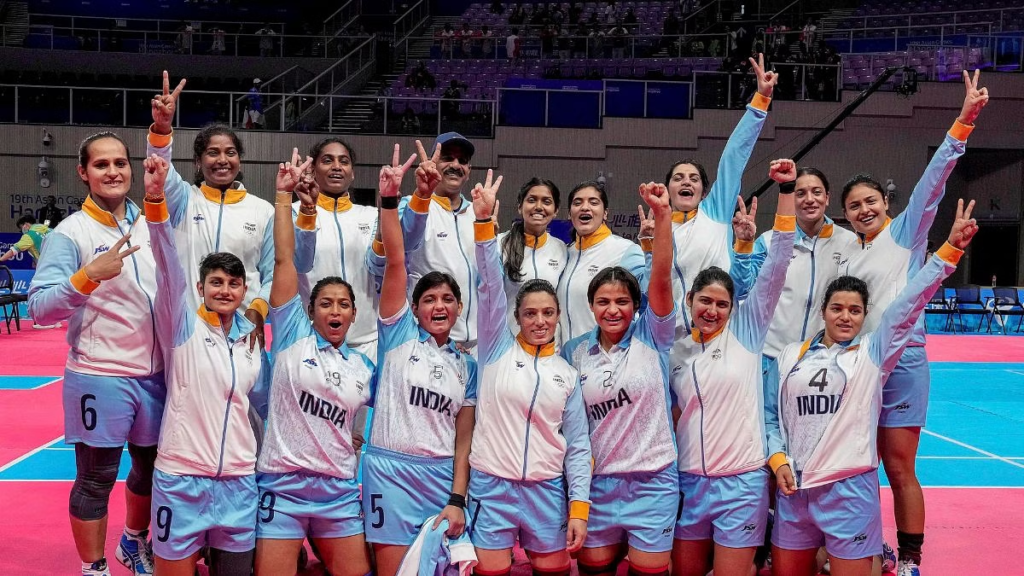
Kabaddi is a popular team sport that originated in India and is now played across the world. The game is known for its fast-paced action and physicality, making it a popular choice for both players and spectators. One of the key aspects of Kabaddi is its unique team dynamics, with a specific number of players on each team. In this article, we will explore the team dynamics of Kabaddi and answer the question: How many players are in Kabaddi?
Understanding the Basics of Kabaddi
Before delving into the team dynamics of Kabaddi, it’s important to understand the basics of the game. Kabaddi is a contact sport that is played between two teams of seven players each. The objective of the game is for one player, known as the “raider,” to enter the opposing team’s half of the court, tag as many players as possible, and return to their own half without being tackled. The defenders, on the other hand, must prevent the raider from returning to their half by tackling them before they can touch their own half.
How many players are in Kabaddi?
As mentioned earlier, each Kabaddi team consists of seven players. These players are divided into two main categories: raiders and defenders. The raiders are responsible for scoring points by tagging opponents, while the defenders aim to stop the raiders and prevent them from scoring. The balance between raiders and defenders is essential for a team’s success, as each player must play their role effectively to secure victory.
Team Dynamics in Kabaddi
The team dynamics in Kabaddi play a crucial role in determining the success of a team. With a set number of players on each team, coordination, communication, and strategy are key elements that can make or break a team’s performance. Let’s take a closer look at the team dynamics of Kabaddi:
1. Roles and Responsibilities
In Kabaddi, each player has specific roles and responsibilities based on their position on the team. The raiders are typically the more agile and quick players who excel at dodging tackles and tagging opponents. They must possess good footwork, speed, and timing to outsmart the defenders and score points for their team. On the other hand, the defenders are the larger, stronger players who are tasked with tackling the raiders and preventing them from scoring. They must work together as a unit to anticipate the raider’s moves and execute successful tackles.
2. Communication and Coordination
Effective communication and coordination are essential in Kabaddi to ensure that players work together seamlessly as a team. Players must constantly communicate with each other on the court, whether it’s calling out plays, signaling for assistance, or providing feedback to improve performance. Coordination is also key, as players must move in sync with each other to maximize their chances of success. By working together and supporting each other, teams can overcome challenges and outplay their opponents.
3. Strategy and Tactics
Strategy and tactics play a significant role in Kabaddi, as teams must devise a game plan to outwit their opponents and secure victory. This includes identifying the strengths and weaknesses of the opposing team, analyzing their tactics, and adjusting their own strategy accordingly. Teams may employ various tactics such as man-to-man marking, zone defense, or offensive plays to gain an edge over their rivals. By studying the game and adapting their strategies on the fly, teams can stay ahead of the competition and come out on top.
4. Teamwork and Unity
Ultimately, teamwork and unity are the cornerstones of a successful Kabaddi team. Players must trust each other, support each other, and work towards a common goal of winning. By fostering a sense of camaraderie and solidarity, teams can overcome adversity, stay motivated, and perform at their best. Teamwork also extends off the court, as players must maintain good relationships with their teammates, coaches, and support staff to build a strong and cohesive team.
In conclusion, Kabaddi is a team sport that requires a specific number of players on each team to compete effectively. With seven players per team, the game’s team dynamics revolve around roles and responsibilities, communication and coordination, strategy and tactics, teamwork and unity. By understanding and mastering these key elements, teams can elevate their performance, outplay their opponents, and achieve success on the Kabaddi court.
Can’t get enough of sports? Check out Sport Circle’s Youtube Channel here. Want more bite-sized content? Follow us on Instagram and Twitter!
